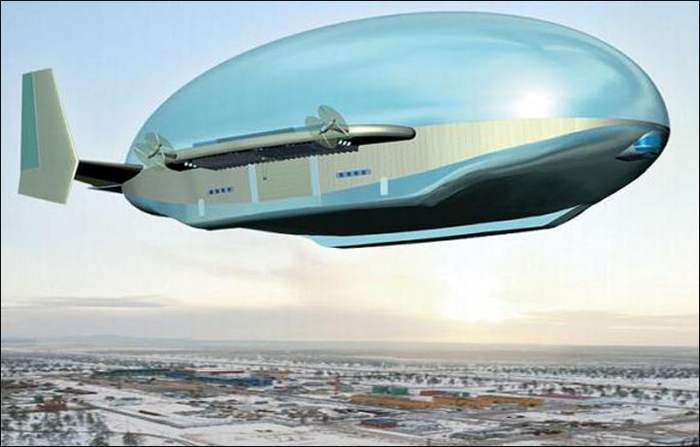

Some 316,000 people died, 300,000 were injured and about 1.8 million people needed immediate food and supplies. He cited the 2010 earthquake in Haiti as an example. Jose Holguin-Veras, director of the Center for Infrastructure, Transportation, and the Environment at Rensselaer Polytechnic Institute, said it would take a lot of airships to make a dent in the service area they aim to fulfill and he's skeptical that the market will be large enough to give way to that many vehicles. While the Aeroscraft is technologically advanced, the next step is making airship transport a viable business, which may be harder than it sounds. The Aeroscraft will have a similar speed, carry much more cargo and be able to travel much farther.

But they cost a lot to operate and their range is only 230 miles with a maximum load of fuel. These copters are often used in rescue missions and to carry heavy equipment. The biggest helicopter available now is the Sikorsky Skycrane, which travels at 126 mph and is able to carry 10 tons. The Aeroscraft won't require that.įor cost and capability, the Aeroscraft compares well with helicopters. The zeppelins of the 1930s also needed ground crews with ropes to wrangle the craft to the ground. Both types of airship need ballast and are difficult to maneuver in rough weather. NEWS: Schools of Sleeper Drones Could Swim Future SeasĪll this makes the Aeroscraft much different from blimps, which are basically flexible, helium-filled balloons outfitted with propellers to move and steer, or zeppelins, which have rigid frames containing lots of small, helium-filled balloons called ballonets. The airship's arrowhead shape keeps it stable a higher speeds and helps give it lift. Blimps, by contrast, are under high pressure, so they deflate much faster.Ī set of turboprop engines like those on a plane provide thrust, combined with another type that Tojo-Verge said he could not discuss.
AIRSHIP TRANSPORTATION SYSTEM CARGOLIFTER SKIN
The gas pressure inside isn't much different from the outside air, so even if one were to put a hole in the skin of the Aeroscraft, the gas wouldn't escape very fast. And because helium is nonflammable, there is no risk of a Hindenburg-like explosion. To sink, the helium is pumped back into the tanks and replaced with air. To fly, the compressed helium is released into the chambers. The helium is housed separately in compression tanks. The Aeroscraft has a rigid shell made of a lightweight, carbon-fiber composite and has special honeycomb-like chambers designed to hold helium.

The Aeroscraft could serve both military and humanitarian efforts, delivering extremely heavy loads to areas without transportation infrastructure, such as roads, train tracks or airports.Īeros recently tested a 230-foot-long prototype and has received $35 million from DARPA and NASA to get a full-sized version off the ground. PHOTOS: Blimplike Craft Hauls Tons of Cargo Anywhere "This vehicle doesn't need infrastructure," Munir Tojo-Verge, the flight control systems engineer at Aeros, told Discovery News. It will be able to travel thousands of miles on a single tank of fuel, carrying 66 tons of cargo - that's three times the capacity of a C-130 and half that of the C-5, the largest military aircraft flown by the United States. The craft is designed to take off vertically and cruise at up to 130 miles an hour at an altitude of 12,000 feet.

If realized, the 500-foot-long Aeroscraft would greatly alter the way cargo is shipped. Montabello, Calif.-based Aeros is working on a rigid airship that can fly like a plane and float like a balloon. But it didn't take long for airplanes to replace dirigibles for commercial and military flight and by the middle of the 20th Century, airships were mostly use for advertising, sightseeing and surveillance.īut blimps may be back. Blimps and zeppelins plied the skies in the early part of the 20th Century, carrying passengers and cargo and even serving as military aircraft during the World Wars.


 0 kommentar(er)
0 kommentar(er)
